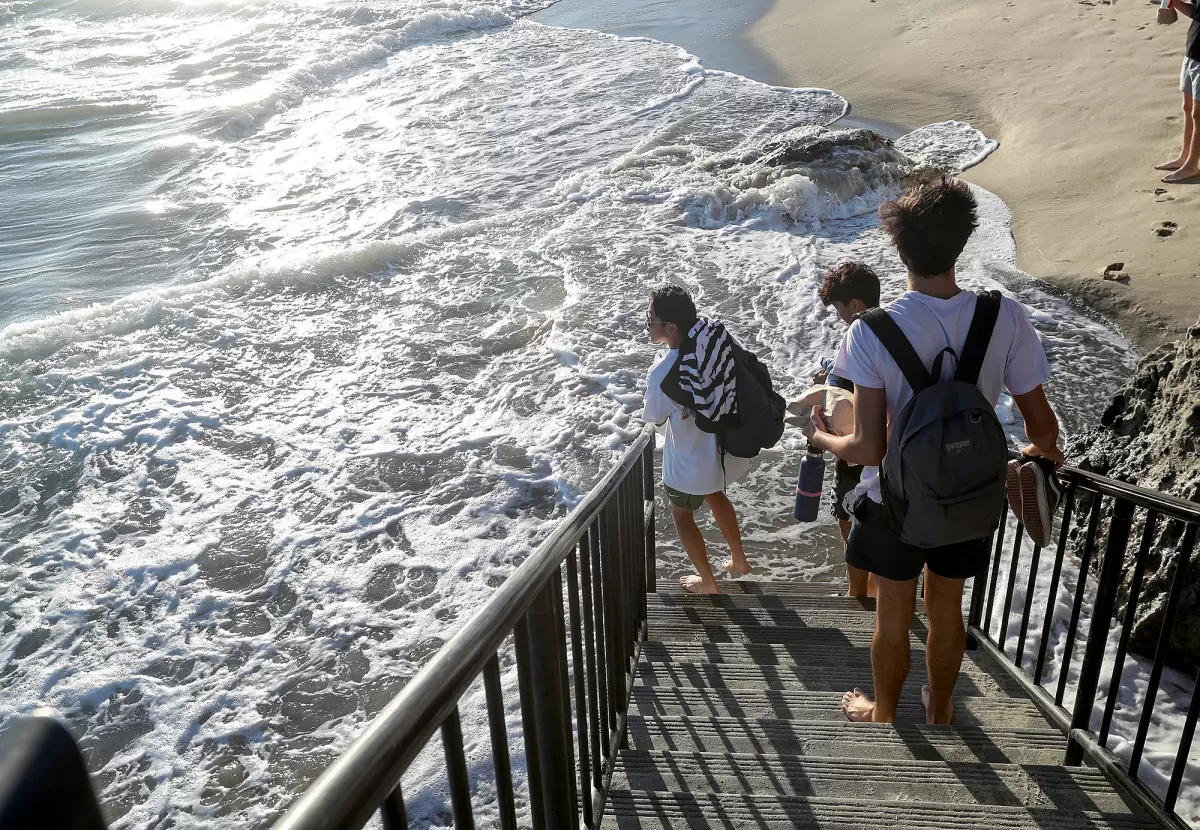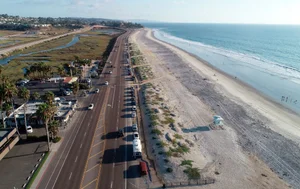
RISING TIDES: IS L.A. REALLY READY?
How coastal cities can best protect themselves from sea-level rise
The ocean is moving in. But unlike most unwanted guests, sea level rise is here to stay.
Because of the carbon emissions already emitted since the Industrial Revolution, sea level rise (SLR) is inevitable in our region. California’s oceans are expected to rise at least 3.5 feet by 2050, creating a host of devastating impacts – from severe coastal flooding to widespread loss of cherished beaches.
But that doesn’t mean all hope is lost. With proper resilience planning at the state and local level, our region can escape the most cataclysmic effects. But we need to start acting right now.
That was the stark assessment of L.A. County staff and other panelists gathered for the “Rising Tides” town hall at the Hermosa Beach Community Center earlier this month. Heal the Bay CEO Tracy Quinn moderated a lively conversation with Rosanna Xia, L.A. Times coastal reporter, and Warren Ontiveros, the Planning Division Chief for L.A. County’s Department of Beaches and Harbors. Hermosa Beach Mayor Justin Massey welcomed the audience.
Xia, author of the acclaimed book “California Against the Sea: Visions for a Vanishing Coastline,” urged policy makers to reframe SLR as an opportunity rather than disaster.
California can mend its “fractured relationship with our shoreline,” she argued, by adopting the mindset of the region’s first settlers. The Chumash, guided by a spirit of balance and reciprocity, looked to care and heal for the shoreline rather than commanding and controlling it.
Our state has seen rising and falling seas for millennia, Xia noted. Centuries ago, California’s northern Channel Islands formed a single land mass, until the Pacific Ocean rose and created five separate islands. The coast is not static, it’s always changing.
But today’s challenges are more stark given manmade emissions. Melting polar ice caps and increased expansion of water through rising ocean temperatures are the primary SLR drivers.
And those rising tides could prove disastrous. California could lose nearly 70% of all beaches and all of its wetlands by 2100 if we fail to act. That loss would truly be a doomsday scenario, with 70M annual day visits to beaches each year in LA County and nearly $1.3 billion in economic stimulus from the coastal economy.
Ontiveros shared some of the steps the County is taking to build in greater resilience to the SLR onslaught. His division has created a scorecard for identifying the two dozen local beaches most vulnerable to erosion, flooding and lack of public access.
Here are the 10 beaches most at risk, in order of vulnerability, according to the County: Zuma, Redondo Beach, Malibu Surfrider, Point Dume, Dockweiler, Dan Blocker, Las Tunas, Topanga, Nicholas Canyon and Will Rogers.
County engineers are readying a number of so-called beach nourishment projects to help preserve sand and public access in these threatened sites.

In a hybrid mechanical-natural adaptation move, engineers hope to essentially take tons of sand taken from the deep sea and “transplant” it on the Zuma and Point Dume shoreline. They would use the reclaimed sand to create “living shorelines,” where installed dunes and plant life would retain sand longer and provide natural buffers to flooding. The plans, which face a number of permitting and logistical challenges still, would add 25 feet of sand to these iconic beaches.
Xia then encouraged the audience to think of the shoreline not so much as a place, but as a process. Everything is always shifting, she said. It’s a fool’s errand to try fix straight lines and immovable objects on the shorelines.
Buffering our coast and building in resilience will require both engineered concrete solutions, such as relocating highways, and nature-based solutions, such as wetlands restoration to accommodate increased flooding, the panelists agreed.
Coastal residents will have to accept change. Their neighborhoods and the larger coastline will look different, panelists said.
Xia described a recent project in Sonoma County that saw CalTrans rebuild an arterial coastline highway that once snaked along Gleason Beach as an overpass further inland. Underneath the roadway, engineers designed a series of natural buffers and floodplains. Some residents called the new project an eyesore, Xia noted, while others saw it as a boon to a threatened community.
“The ‘my way or the highway’ mentality can’t work,” Xia said. Communities need to compromise and be realistic.
Ontiveros singled out the threatened Cardiff Beach in northern San Diego as an example of residents and planners working together to successfully adapt for rising seas. Nearly five acres of dune habitat has been restored in a multi-benefit project that will help protect a vulnerable section of PCH and increase public access to local beaches.
Xia noted that statewide resilience will be achieved through a series of iterative projects like Cardiff. There won’t be one master document that solves all the many challenges in one fell swoop. Planning means visioning and building in a continual process over decades, where knowledge gained can be applied to the next challenge.

Panelists did not delve into the tricky question of how we find funds to pay for all this resilience work, which could hit $1 trillion statewide by century’s end. Capitol lawmakers have made more federal funds available as part of a renewed push to protect the nation’s infrastructure.
While legislators and scientists have largely led the push to battle SLR, Xia urged decisionmakers to widen the idea of who is an expert. Indigenous communities and frontline neighborhoods must be part of finding solutions, she said. Ontiveros echoed her comments, noting that millions of inland beachgoers depend on the sea for recreational and therapeutic relief. Hearing from inland communities is critical and will require proactive outreach, he said.
The session ended with thoughts on how everyday residents can best help their communities prepare for the ravages of sea-level rise. Coastal city residents should get involved in local city planning., Xia urged. By 2034, every beachside municipality must submit a Local Coastal Plan to state officials, with SLR vulnerability assessments and resilience recommendations.
To get a copy of Rosanna Xia’s book please click here.